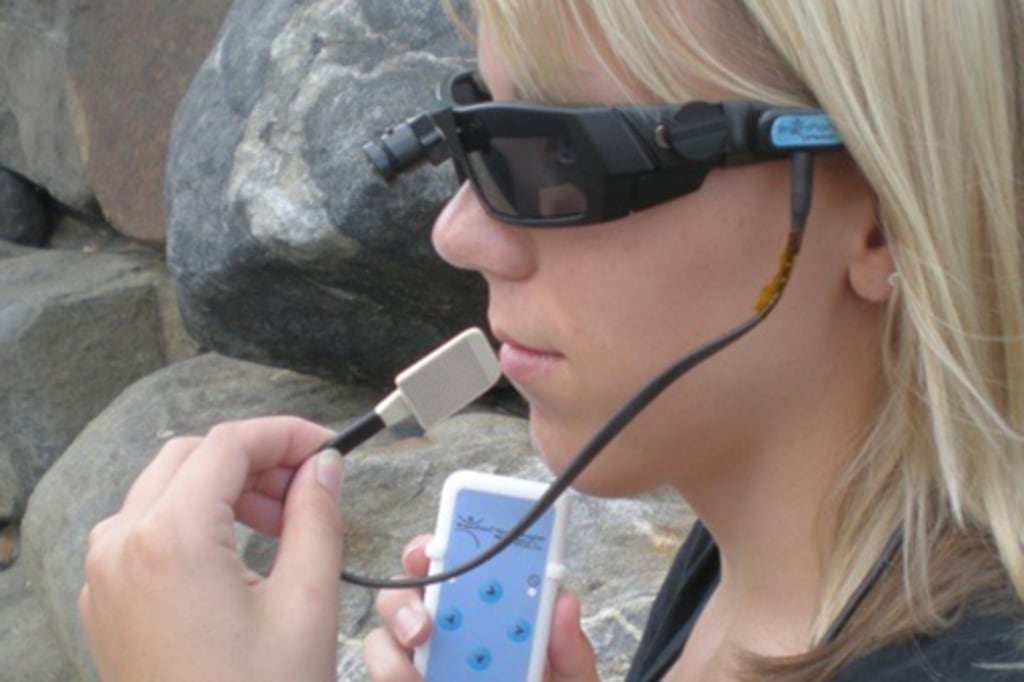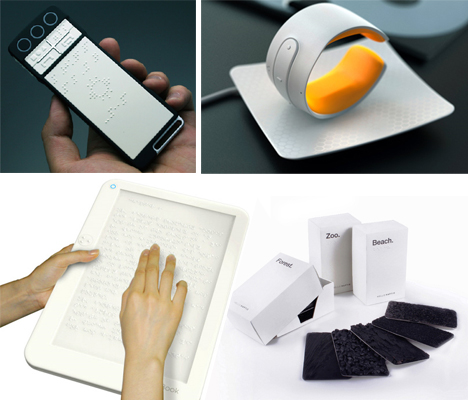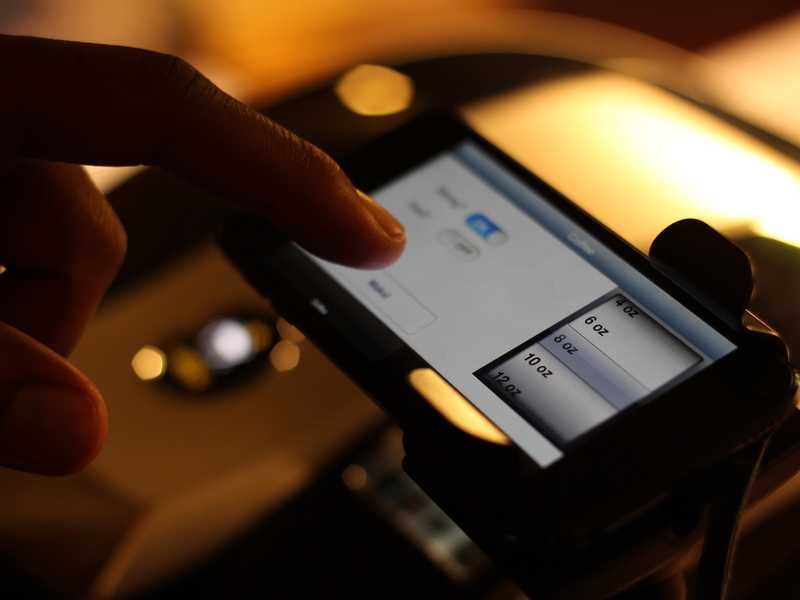Voice-Activated Assistive Devices: Supporting the Visually Impaired
Voice-Activated Assistive Devices: Supporting the Visually Impaired
Blog Article
Discover Ingenious Devices Developed for the Visually Impaired
The growth of innovative devices for the aesthetically impaired stands for a considerable innovation in accessibility and self-reliance. Technologies such as wise glasses with AI abilities and mobile applications made to give acoustic summaries are reshaping daily experiences for customers. Furthermore, wearable tools that utilize haptic comments boost ecological understanding, while contemporary Braille developments use new ways to involve with message. As these tools remain to develop, their influence on the lives of those with visual disabilities raises vital concerns concerning the future of inclusivity and autonomy in different facets of life. What lies ahead in this technical landscape?
Smart Glasses for Navigating

Smart glasses created for navigating are revolutionizing the way aesthetically damaged individuals communicate with their atmosphere. These advanced tools utilize a mix of cam technology, fabricated knowledge, and auditory feedback to offer real-time info concerning environments. By using barrier detection systems, clever glasses can signal individuals to prospective hazards, making it possible for much safer movement in both familiar and strange settings.
The assimilation of GPS technology better enhances navigating capabilities, allowing individuals to receive acoustic directions as they relocate. This hands-free technique not only cultivates independence but additionally equips aesthetically damaged individuals to navigate city landscapes with raised confidence. Additionally, many smart glasses are furnished with functions that identify sites and road signs, providing contextual info that improves the user experience.
In addition, the growth of these devices is continually advancing, with firms working to enhance the precision of item acknowledgment and expand the variety of navigational features. As clever glasses come to be much more available and cost effective, they hold the possible to considerably transform daily life for visually damaged users. Ultimately, these cutting-edge devices represent an essential step towards inclusivity, offering boosted mobility and a higher sense of freedom for individuals browsing the world around them.

Mobile Application for Daily Living
Just how can mobile applications improve the lives of aesthetically damaged people? Mobile applications are reinventing the means visually damaged individuals navigate their environments, take care of everyday tasks, and access info. These applications supply essential assistance through numerous functionalities, fostering independence and boosting lifestyle.
Numerous ingenious mobile apps are designed especially for everyday living. As an example, apps like Be My Eyes connect visually impaired customers with sighted volunteers by means of video phone calls, allowing them to get real-time assistance with jobs such as reading tags or navigating unfamiliar spaces. Similarly, Seeing AI, created by Microsoft, utilizes artificial knowledge to define surroundings, reviewed text, and recognize objects, efficiently transforming a mobile phone right into a powerful device for daily aid.
In addition, navigating applications tailored for the aesthetically damaged, such as Aira and BlindSquare, use audio-based directions and environmental info, making it possible for individuals to traverse their surroundings safely and confidently. Past navigating and immediate assistance, mobile apps likewise sustain company and task administration, with functions that aid customers establish suggestions, create order of business, and track appointments. In recap, mobile applications serve as crucial resources, equipping aesthetically impaired people to lead more independent and fulfilling lives.
Wearable Technologies for Help
Empowerment via technology is progressively evident in the world of wearable gadgets made to help visually damaged people. These cutting-edge devices integrate perfectly into life, enhancing navigating and supplying essential responses to customers. Clever glasses furnished with cameras can read and identify faces message out loud, permitting users to interact even more with confidence in social and expert settings.
Another significant advancement is the use of haptic feedback systems in wearable tools. These systems make use of vibrations or various other tactile signals to convey info regarding the individual's atmosphere, such as barriers or changes in surface, enhancing flexibility and safety and security. Wearable technologies likewise consist of wristbands that attach to smartphones, signaling customers to notices with refined resonances, hence boosting connection without dependence on visual hints.
As these technologies remain to advance, they are not just boosting eye test independence for aesthetically impaired people yet additionally cultivating a higher feeling of addition in culture. By connecting the void between difficulties dealt with in everyday living and the potential for autonomy, wearable technologies function as essential devices in the pursuit for equality and empowerment for those with aesthetic impairments.
Sound Description Tools
Audio description devices play a vital duty in improving accessibility for aesthetically impaired individuals, providing them with the capacity to engage with aesthetic media. Assistive technology for the blind. These devices offer narrated descriptions of key visual aspects in films, tv shows, and live performances, ensuring that customers can completely comprehend the context and emotions communicated via visuals
Sound description can be integrated into numerous platforms, including streaming solutions, movie theater screenings, and live theater. Many popular streaming services now include audio summary as an availability attribute, allowing visitors to pick it quickly. Along with mainstream media, specialized apps likewise exist, giving audio descriptions for art exhibitions, museums, and other social occasions.
The performance of audio description hinges on the ability of the storytellers, that have to share visual information succinctly without diminishing the original sound. Innovations in this field are additionally leading the way for more individualized experiences, where individuals can change the degree of information and pacing according to their choices.
Braille Innovations and Tools
Braille technologies and gadgets have actually considerably transformed the means visually impaired individuals interact with text and details. Modern improvements have caused the growth of vision exam near me versatile devices that improve literacy and self-reliance amongst users. Notably, Braille present technologies have evolved, permitting vibrant analysis experiences. These gadgets transform electronic text right into Braille, enabling individuals to access a substantial array of information on computer systems, tablet computers, and mobile phones.
Moreover, mobile Braille notetakers integrate conventional Braille input with modern-day performances, assisting in note-taking, organizing, and document editing on the move. Wearable technology for low vision. These portable gadgets often feature text-to-speech abilities, linking the void in between Braille and auditory info
On top of that, innovative Braille printers have actually emerged, allowing customers to generate Braille labels, papers, and academic materials effectively. This availability cultivates greater engagement in expert and educational settings, eventually promoting inclusivity.
Moreover, research study right into smart Braille modern technologies proceeds to increase. Tools that include expert system are being explored to give real-time navigation help and contextual details, boosting the customer experience in varied settings. Overall, these technologies mirror a dedication to empowering aesthetically impaired individuals through modern technology, guaranteeing they can easily gain access to and involve with the globe around them.

Final Thought
The development of cutting-edge devices for the aesthetically damaged significantly improves freedom and quality of life. These innovations not just foster higher inclusion but likewise advertise freedom in daily tasks, inevitably contributing to an extra available and equitable culture for aesthetically impaired people.
As smart click this glasses come to be more available and budget-friendly, they hold the possible to dramatically transform day-to-day life for visually damaged customers. Mobile apps are reinventing the method aesthetically damaged customers navigate their environments, manage everyday tasks, and access info. Applications like Be My Eyes attach visually impaired users with sighted volunteers using video clip phone calls, allowing them to receive real-time support with tasks such as reviewing tags or navigating unfamiliar rooms.In addition, navigating applications customized for the aesthetically impaired, such as Aira and BlindSquare, offer audio-based directions and ecological info, enabling customers to traverse their environments securely and with confidence.The development of cutting-edge tools for the aesthetically impaired significantly boosts independence and top quality of life.
Report this page